Lowell Week in Review: August 16, 2015
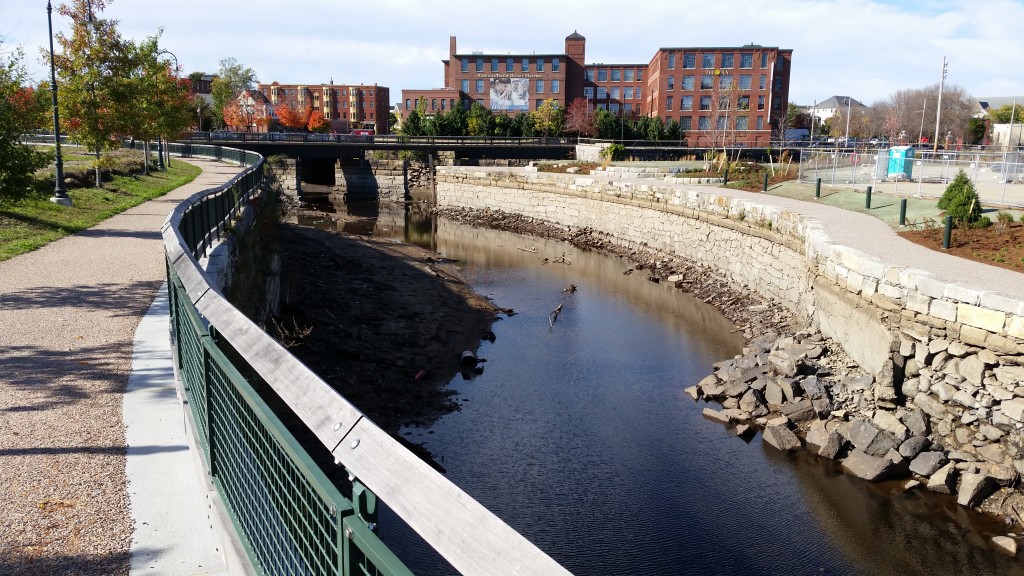

Hamilton Canal District
Request for Qualifications for Hamilton Canal District
The 129 people who came on last Saturday’s Lowell Walks learned the latest on the Hamilton Canal District from Allison Lamey, the city’s economic development director. We also walked through the entire 15 acre site. At this Tuesday’s council meeting, City Manager Murphy formally presented to the councilors a revised Request for Qualifications (RFQ) which is the first step in procuring a new master developer for the project (replacing the original master developer, Trinity Financial, which parted ways with the city earlier this year).
In his presentation on the 42-page RFQ, City Manager Murphy reminded everyone of all the planning and permitting that has already gone into this project. He thinks it would be unwise to start again from scratch. He emphasizes that the RFQ is not strictly limited to the mix and amount of commercial, retail and residential in the earlier RFQ. He calls this one “wide opened and flexible” which asks the potential developer’s recommendation on the best use for the property.
There are tight timelines. The winning developer must obtain permits within 6 months of award and begin construction within a year.
Councilor Belanger remarked that the emphasis should be on commercial development and that any housing should be owner-occupied condominiums so that people with disposable income will live there and support downtown businesses. Councilor Kennedy suggested there should be no residential and that the entire site should be offered and treated as an industrial park. He then made a motion that all references to residential be deleted from the RFQ.
Councilors Samaras, Martin, Milinazzo and Mayor Elliot all responded by saying that they want to give the city manager the maximum amount of flexibility. They also want to get this moving and not go back to the drawing board and jettison all the planning and permitting that has already been done by substantially altering the plan. They concurred with the manager that the RFQ does give the developer much flexibility and that they would like to see what kind of responses are received. For those reasons, they supported the RFQ without it being amended. Kennedy’s motion to eliminate any mention of residential in the RFQ failed with 8 against and only him voting in favor. The RFQ as presented by the City Manager then was adopted unanimously.
There is a saying that goes “he who forgets history is condemned to repeat it.” I thought about that while watching the discussion of the Hamilton Canal RFQ. Back in 1965, the City Council voted to bulldoze all the housing in portions of downtown to turn those sites into places where “modern industry” could congregate while all the workers raced off to their suburban homes at the end of each work day. History tells us unequivocally that such an approach not only did not work as intended, but also yielded disastrous consequences for cities that tried it (like Lowell). Tuesday night, it sounds like some city councilors, or at least some who have the ears of certain city councilors, want to give that another try.
Yes, we would like Google to locate here in Lowell. We would like Amazon.com to locate here in Lowell. We would like any progressive, cutting edge company that has successfully navigated the 21st century economy to come to Lowell. Well none of those companies are looking for office parks as locations. They are looking for mixed-use, urban neighborhoods with a balance of employers, residences and retailers because that’s the kind of setting in which the employees they seek to hire wish to work and live.
Creating that mixed use neighborhood doesn’t guarantee any business will locate in the Hamilton Canal District, but it would be the best chance that some would. Besides, if the Hamilton Canal District becomes all commercial, who will be there at night and on weekends? Who will shop in the stores or restaurants that locate there at times other than when businesses are open? An entirely commercial area with nothing but daytime jobs will guarantee a night and weekend ghost town. In the end, the council unanimously adopted the RFQ as proposed by the city manager.
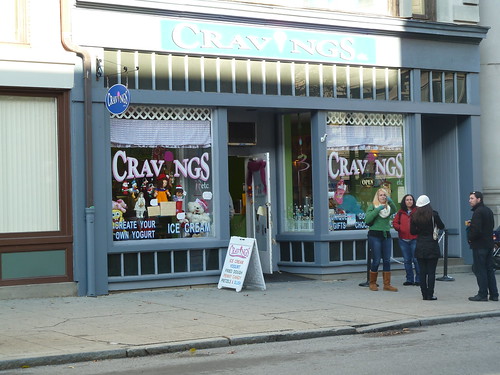
A once occupied, now vacant storefront
Downtown Vacancies
When we’re on our Saturday morning walking tours, the downtown looks terrific. Too often, however, there aren’t many others walking around. This lack of pedestrian traffic poses a huge challenge to any business that opens in downtown. This came up at Tuesday’s City Council meeting in the form of a report from the City Manager on a previous motion regarding the extent of vacant storefronts in downtown.
In essence, the memo said that the City Manager has organized weekly walking tours of downtown to engage with property owners to identify the needs of property owners and to offer city services. DPD continues to work with property owners and also meets with prospective tenants. There was also a three page list of vacant addresses and anticipated uses. You can look at the list yourself but here are some that caught my eye:
- 166-174 Central Street (big building between Hurd & Warren) will open in October as an adult daycare facility
- Ray Robinson’s will be a dentist office in November
- Union National Bank building on Merrimack Street is being rehabbed as a restaurant
- Chantilly Place/Cherry & Webb is under lease negotiations for use as a bookstore/café with possible October opening
- Mambo Grill will open this month as a Ramen noodle restaurant
- Chalifoux Building (upper floors of 24-26 Central will be 47 market rate apartments to be ready in October
- Delicias Bakery at 11 Kearney Square (formerly Shaws, Brighams) – the building is for sale; no new retail occupancy expected until a sale occurs.
- Lowell Sun Press Room (15-17 Kearney Sq) previously reported deal fell through.
- 43 Market St had been abandoned for years and fined heavily by the city. The building changed hands, purportedly to be used as a restaurant, but no work is being done and the new owners are not responding to communications from the city.
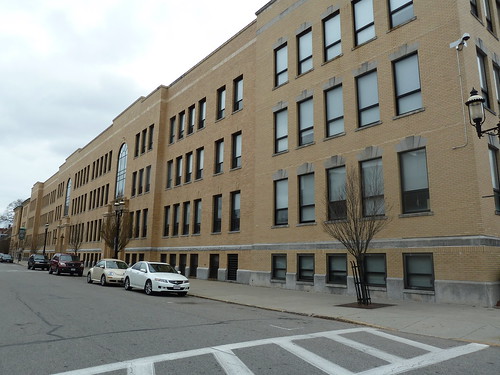
Lowell High School
New Lowell High School
In a preview of coming attractions, the council referred a $2 million loan order for a feasibility study for a new Lowell High School to a public hearing on August 25, 2015 at 7pm. Councilor Belanger asked that a component of the study include an opinion of “the highest and best use” of the land where the high school currently sits. The manager said the state school building authority has pretty strict requirements for what goes into a feasibility study but there’s no reason why the city could not do a separate study on the highest and best use of the existing high school parcel. There was a lot of back-and-forth on this with Councilors Kennedy and Belanger being most vocal in support of obtaining a locally-produced study as a way of possibly pre-empting the state’s feasibility study, but the majority of councilors agreed with the manager and the mayor that the state’s school building authority controls the scope of the feasibility study regardless of what any separate “higher and best use” analysis might conclude.
A new high school will be a controversial topic in the city in the coming months. This was just a preview of that.
Complete Streets
Besides mixed use neighborhoods, successful 21st century American employers seek out communities that provide a coherent public transportation system as well as ample and safe opportunities for employees to get around on bikes and on foot.
For that reason, it was commendable for the city council to adopt the “Complete Streets” policy for the city. I do believe the main driver of this was to allow the city to qualify for additional state funding reserved for communities that adopt this program. The risk is that no one in city government pays much attention to the substance of the complete streets program.
The purpose of Complete Streets is to “create, maintain and operate a safe and efficient multi-modal transportation network that accommodates all users while preserving the unique character of [Lowell’s] neighborhoods.”
Simply put, this program requires the city, for every transportation-related project, to consider the impact of such project not just on motor vehicles, but also on cyclists and walkers.
The Hazards of Walking in Lowell
Walking in downtown Lowell remains a challenge, mostly because of those behind the wheels of automobiles. Part of it is bad driving habits accumulated over time. Foremost among these is treating a right turn on a red light as more of a suggestion to yield than as a command to stop. Drivers approaching red lights and stop signs intending to take right turns do not stop. Instead they reduce their speed a bit while swiveling their heads to the left in search of that slight opening in oncoming traffic that will allow them to mash down on the gas pedal and complete their right turn in front of the car approaching from the left, the car with the green light. The drivers making these illegal right turns (illegal because they don’t come to a full stop first) pay zero attention to the sidewalk to their right and anyone on it who is about to cross the street in front of them. Such a pedestrian would be crossing the street legally, yet is at a very real risk of being run down. More than anything else, my observations identify this as the single biggest threat to pedestrians in Lowell.
The next biggest threat comes from those drivers turning at controlled intersections with “concurrent” crossing lights. In this scenario, the driver does have a green light but instead of going straight, intends to make a turn onto an intersecting road. The pedestrians crossing that intersecting road have, at the same time, the white crossing light signaling them to proceed. This presents a conflict between the pedestrian and the turning car. The law is very clear. The car must yield. The only time that actually happens is when you as a pedestrian “seize” the space of the street. That inevitably gets you a blast of the horn or some swears tossed in your direction by the momentarily inconvenienced driver. This driver behavior is more out of ignorance, I believe, than purposely disobeying the law. It’s an area where better education of currently licensed drivers reinforced with some police enforcement might be beneficial.
In both of the circumstances described above, having a critical mass of pedestrians would also help. When you’re by yourself waiting to cross a street, it’s easy for a driver to ignore you or cut you off. If you’re part of a crowd of people, it’s harder for drivers to do so. That’s why “concurrent” street lights work so well in Boston, New York, and Washington. It’s not that drivers have greater respect for the rights of pedestrians; it’s that there are a lot more pedestrians asserting their rights.
A big problem in Lowell is that too few people view the city from walking on a sidewalk as opposed to from behind the wheel of a car. That’s why two city council meetings ago we had three different motions targeted at cracking down on jaywalkers. I don’t ever remember a motion targeted at drivers who pose risks to pedestrians. When councilors change their perspective from behind the wheel of a car to trying to cross a busy intersection on foot, perhaps the city will take some meaningful steps towards making streets safe as well as complete.
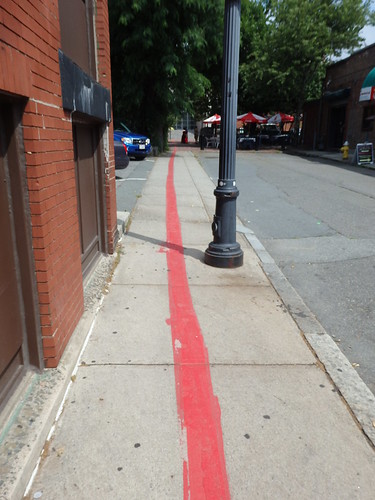
Red line leading visitors thru Salem
Historic Trail Through Downtown Lowell
Another “motion response” Tuesday night was to a motion previously made by Councilor Leahy that the city install a visible line, either of paint, brick, or some other substance, that would lead visitors to historic places in downtown much like Boston’s Freedom Trail or a red painted line in Salem, Massachusetts.
The response is six paragraphs long and makes no mention of such a line. There is talk about existing printed materials that layout walking tour routes. There is also talk of “wayfinding” and historic markers with many of them to come at some future time.
While such historic markers are all good, I’m a big proponent of a simple line painted on the sidewalk. On a daytrip to historic sites in Salem, Massachusetts last summer, a bright red line painted on the sidewalk was an easy and fun guide around the city. I’m not sure what the hold up on doing this for Lowell might be but reading between the lines of the memo presented to the council, I got the impression that the bureaucracy was telling the council, “we’re not going to paint any line on the sidewalks of downtown Lowell.” I think the line is a good idea; I think not doing it is a mistake.
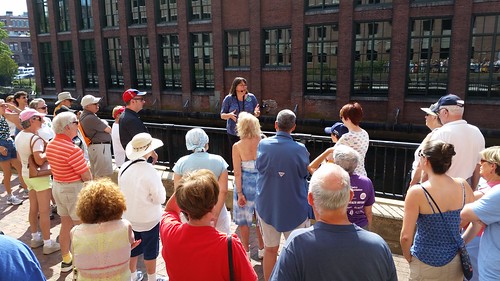
Jane Calvin leading Natural Lowell walk
Lowell Walks
Thanks to Jane Calvin of the Lowell Parks & Conservation Trust for leading yesterday’s Lowell Walks tour of natural places in downtown Lowell. Seventy-five people participated. All were grateful that they did. Jane took us along the Pawtucket Canal past Lower Locks (which is behind the UMass Lowell Inn & Conference Center) then over to the far side of the Concord River to the start of the Concord River Greenway. Quite a few of the tour participants had never seen that walkway and were very impressed. All were left anxious to have the final stretch of the Greenway which, when it is done, will connect the Lowell Memorial Auditorium to the Lowell Cemetery, a 1.7 mile route all alongside the Concord River.
The biggest treat for many of us was being introduced to a dirt path running behind the Lowell Housing Authority’s Archie Kenefick Manor which is behind the Immaculate Conception Church on East Merrimack Street. This pathway begins where the Concord River flows into the Merrimack and extends eastward towards the Hunt’s Falls Bridge. Although there was a lot of foliage on the river bank, you could easily make out the CVS at the corner of Bridge Street and the VFW Highway as well as the much closer Massachusetts Mills buildings that will soon be developed into housing.
The next Lowell Walks tour is next Saturday, August 22 at 10 am from the National Park Visitor Center. It will be led by Jim Dyment, the executive director of the Brush Gallery and the topic will be Lowell Artists, Past and Present.
White Squirrel
The topic of yesterday’s walking tour was natural Lowell. Along the way we saw some wild life including a blue heron bathing at Lower Locks. On Friday while in Boston, I spotted an interesting example of urban wildlife – a white squirrel. I posted a photo on Facebook where it got more attention than I expected, so I thought I would share it here as well.
